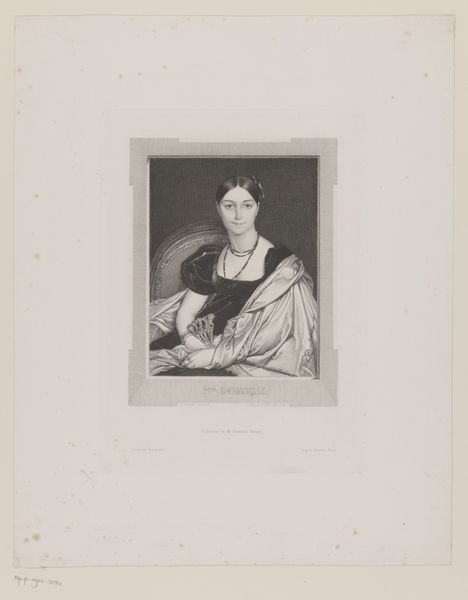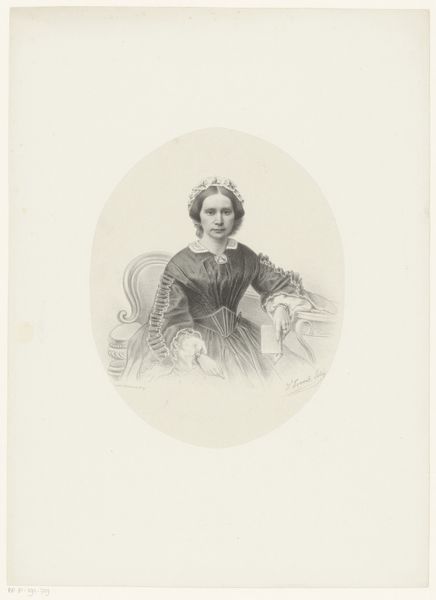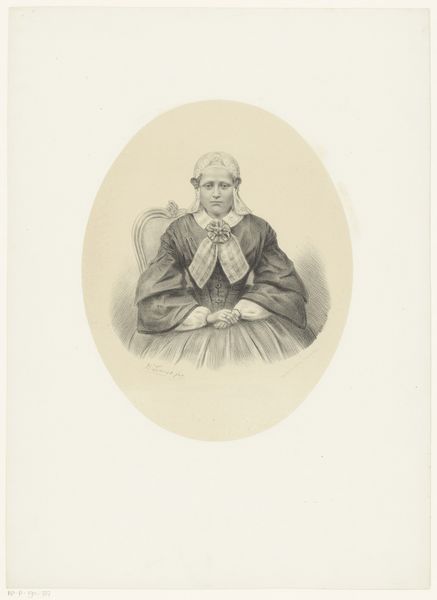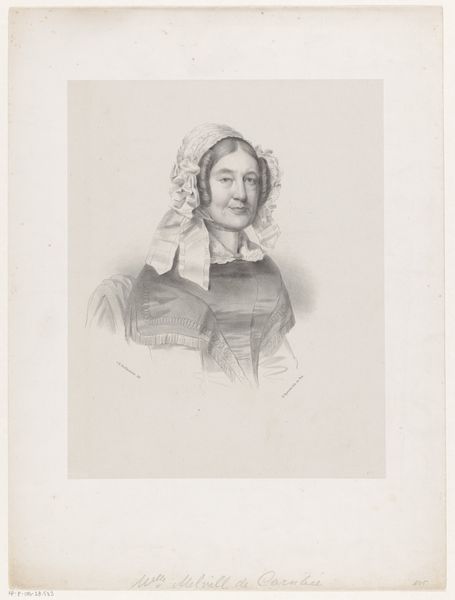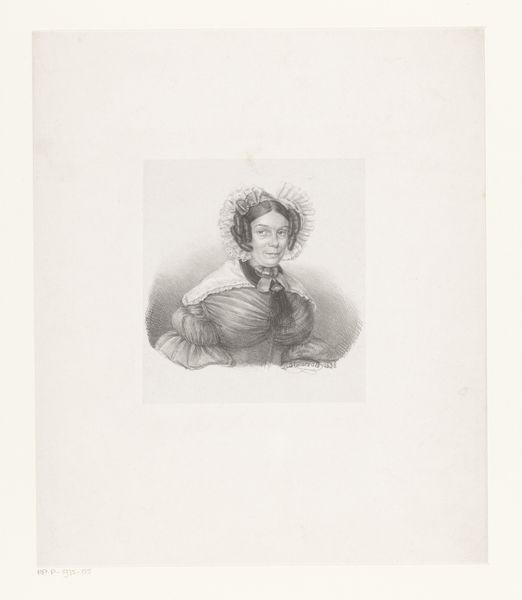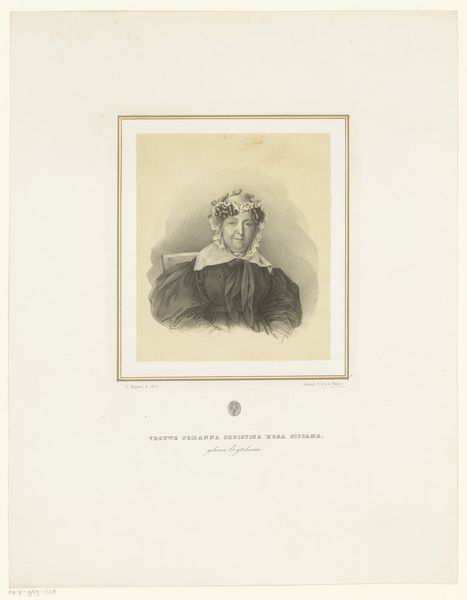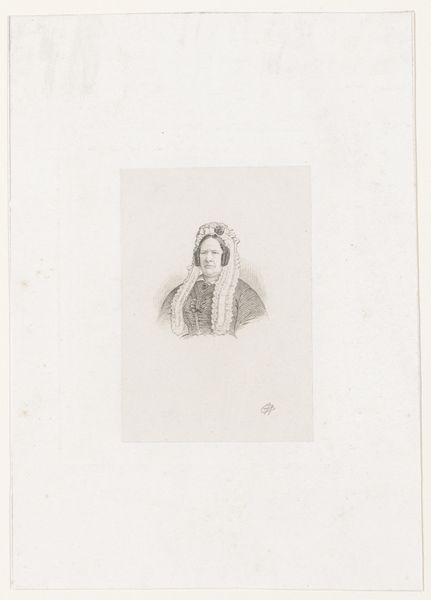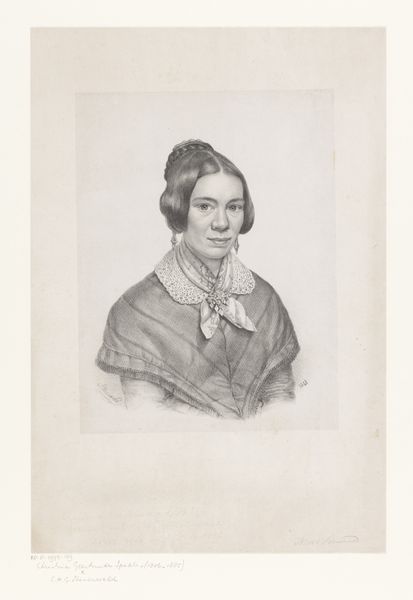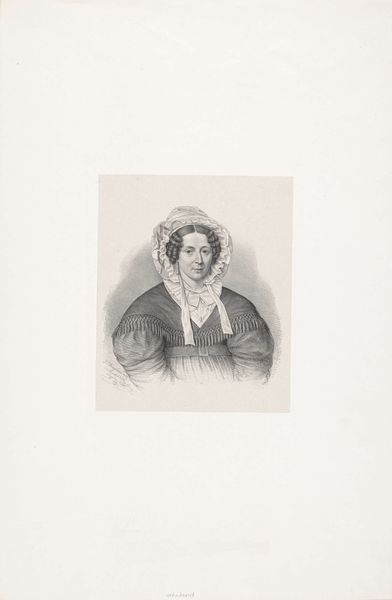
#
portrait
# print
#
romanticism
Dimensions: height 324 mm, width 243 mm
Copyright: Rijks Museum: Open Domain
Curator: Here we have a print titled "Portret van Ida Pfeiffer," dating from sometime between 1824 and 1858. Editor: It strikes me as somber, almost severe. The lighting is subtle but definite, emphasizing the woman's features. Is it a lithograph, perhaps? The gray tones are so delicate. Curator: It is a print, and yes, there's a quiet dignity about it. Christian Heinrich Gottlieb Steuerwald created it, placing Ida Pfeiffer, the subject, squarely within the visual language of Romanticism even though the exact details of its making and initial reception remain elusive. The image of Pfeiffer also offers a rich ground for exploring how female figures were viewed within expanding European society of the period. Editor: Thinking about the position of women then... and this very restrained depiction…it almost speaks to the limited roles deemed acceptable. I wonder, what's known about Ida Pfeiffer herself? The portrait exudes a powerful inner strength, contradicting the demure presentation. Curator: Exactly! Pfeiffer was, in fact, an intrepid explorer and travel writer who defied those restrictive societal expectations. Her books were widely read. So this portrait plays a crucial role in framing that tension between convention and a woman forging her path. It makes us reconsider the assumed passivity embedded in this kind of image. Editor: The bonnet, the tightly buttoned dress, those are visual signals meant to convey propriety. And the shadow and stark lines could represent a complex identity. In an era where printed images shaped public perception, Steuerwald's portrait subtly acknowledges, perhaps even celebrates, Pfeiffer's unique position. What role did the art world play in recognizing and advancing the position of women in society? Curator: Good point. Institutions often acted as gatekeepers, but portraiture allowed for a controlled yet publicly visible representation that navigated expectations of women in a world shifting due to industrial and societal progress. This image might invite contemporary analysis of female adventurers across time and whether Pfeiffer's position helped redefine what being a female in that society might be. Editor: Thinking about it, the act of depicting a woman renowned for exploration and intellect at the time would certainly promote shifting views in society! Thanks. Curator: Indeed! It's a potent image that merges Romantic ideals with social critique. Thank you for discussing.
Comments
No comments
Be the first to comment and join the conversation on the ultimate creative platform.
